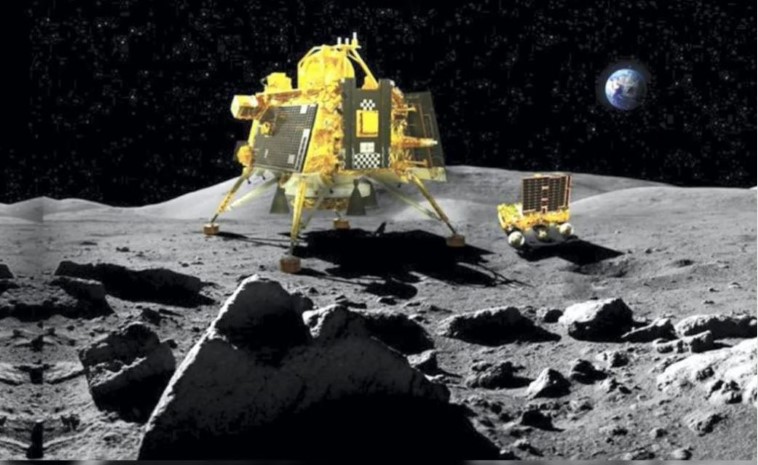The Indian robots woke up from their scheduled nap on the Moon

Russia’s Luna 25 was faster than India’s Chandrayaan-3 complex. Luna 25 was the first to land on the Moon, but not as planned by its creators.
Due to an as-yet unknown cause-error, the rocket engine worked for too long and literally “knocked” Luna 25 on the surface of the Moon.
It was the second landing attempt for the Indians. In the first attempt, Chandrayaan-2, they only left remains on the surface of the Moon. In the meantime, they worked diligently.
The Indian Space Agency (ISRO) launched Chandrayaan-3 towards the Moon on June 14 from the Satish Dhawan Space Centre. The spacecraft entered the orbit around our natural satellite on August 5, 2023.
It took another twenty days to set off on the journey of no return to the surface of the Moon. The landing went according to plan and the Chandrayaan-3 complex was placed on the surface of the Moon on August 23, 2023.
The lander is named Vikram and the rover inside it is named Pragyan. The lander and rover are upgraded versions of their eponymous predecessors from the Chandrayaan-2 mission (launched in 2019).
Vikram and Pragyan landed in the wider area of the south pole of the Moon, in the early morning of the Moon, according to our concept of day and night. Since day and night on the moon last about fifteen days each, they started working literally immediately after landing.
They are structurally designed to work on the Moon during the day. In translation, about fifteen Earth Days. The scientific and technical objectives of the mission were successfully completed. The first landing of Humanity’s robotic emissaries in the area of the South Pole of the Moon is now a reality.

Only four countries from our planet have successfully landed on the inhospitable world we call the Moon. In order; The Russian Federation (ex USSR), the United States of America, the People’s Republic of China and now the Republic of India.
After the Pragyan rover completed its work program, its systems were shut down as planned before the night would find it completely unprepared. The Indians hoped that in the switched off state, it might be able to live in the world of “semi-solids”, and possibly wake up with the Sun’s rays on the next lunar morning. An almost identical procedure was done with the Vikram lander.
Then a pleasant surprise happened!
The command was sent to the lander to turn on its rocket engine, raise the craft about half a meter above the surface and land again, several tens of centimeters away from the original landing place!
Vikram did the job successfully!
This was done in order to gain experience and data for planning future missions, including those by which the Indians will return lunar soil samples to Earth. It is not excluded that in one of the next missions, India will transfer the landers and rovers from one location on the Moon in this way!
This would multiply the range of research with one and the same apparatus. Moving existing equipment by several tens or hundreds of kilometers would literally mean combining the costs and resources that previously had to be carried out by separate missions in one mission.
India has become a lunar superpower for only 74 million USD (the cost of the current mission). All three missions so far were estimated at a total of slightly less than 250 million USD.
To save money, the Chandrayaan-3 orbital module did not carry scientific equipment like its predecessor in the Chandrayaan-2 mission, but only radio relay devices.
This approach to the exploration of the Moon really brings a true revolution!

